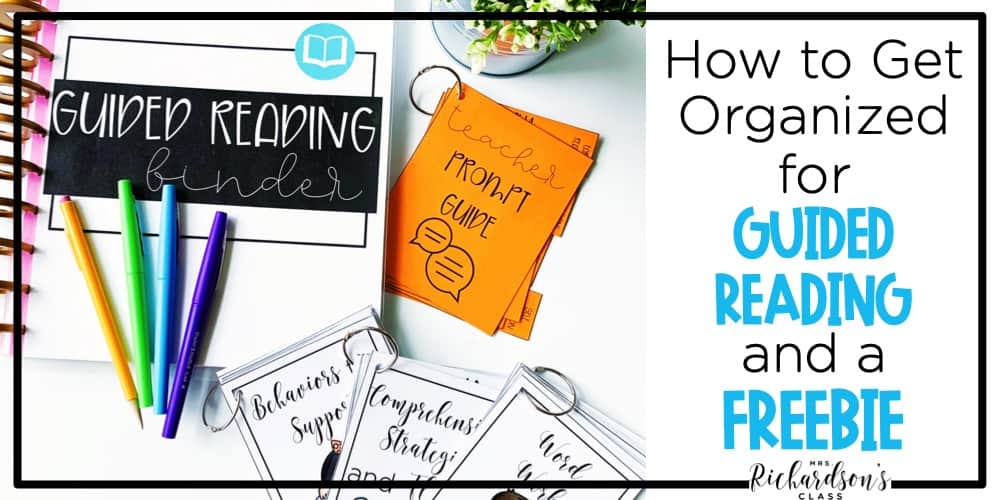
When you open your guided reading binder, what do you see? Are your lesson plans and student data forms easily accessible? Do you know which students need a running record today? Do you have all the resources you need at your fingertips?
I know I got tired of disheveled papers falling out, losing track of which student needed which teaching point, and have to flip through multiple books for resources I needed for each group. I love to stay organized. I knew my guided reading binder needed a makeover because it gave me a headache just looking at it. Plus, it was so frustrating to plan each lesson and analyze my students’ needs.
Finally, I decided to put absolutely everything I’d ever need in one place. I have used this for more than five years now. It has changed, adapted, and grown with me over time. It was so helpful to me in my classroom that I decided to share how I got organized in guided reading. It’s now helped over 1,300 other teachers, too!

One teacher said, “This binder finally got me organized in Guided Reading.”
You can be organized, too. These simple steps are how I got started organizing my binder to make my guided reading time much easier.
Use dividers for each of your groups, reading conferences/student data, and teacher resources. If each section isn’t clearly labeled, you’ll spend too much time flipping back and forth hunting for information instead of teaching students.


You must make sure you can quickly see which students are in each reading group. I personally like to laminate my blank group page, write students names on small sticky notes, and place the sticky notes into the correct group. It makes it super easy to move students around! In the Guided Reading Binder kit, I included several templates to record reading groups.
Knowing what you’re going to teach each day is the key to strong reading instruction. Guided reading lesson plans don’t have to be long and with full sentences. Whatever is enough that you’ll know exactly what you need to do!

There are several different lesson plan templates you can try out to find the perfect fit for you. I love the one that has the helpful tips on what to do before, during, and after reading. It makes working through the lesson cycle very easy!
Planning when to meet with each group throughout the week ensures you will have every student at the table. As you assess the needs of your students, you’ll have a better idea of which groups need more time with you than others. In the Guided Reading Binder, I share more about this, give you a sample schedule, and provide a blank group schedule for you.
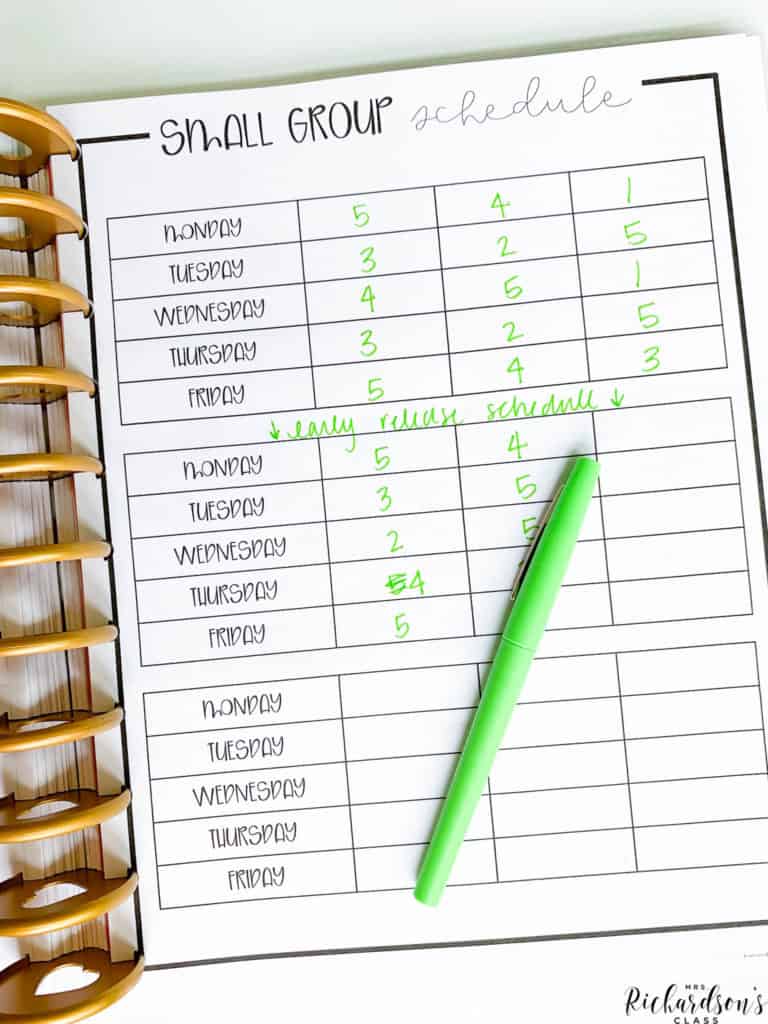
I do a running record each time I meet with my students on at least one student in the group. I record their success and track their growth easily this way. The binder has blank running record forms, checklists, and spreadsheets so you can see who needs a running record.
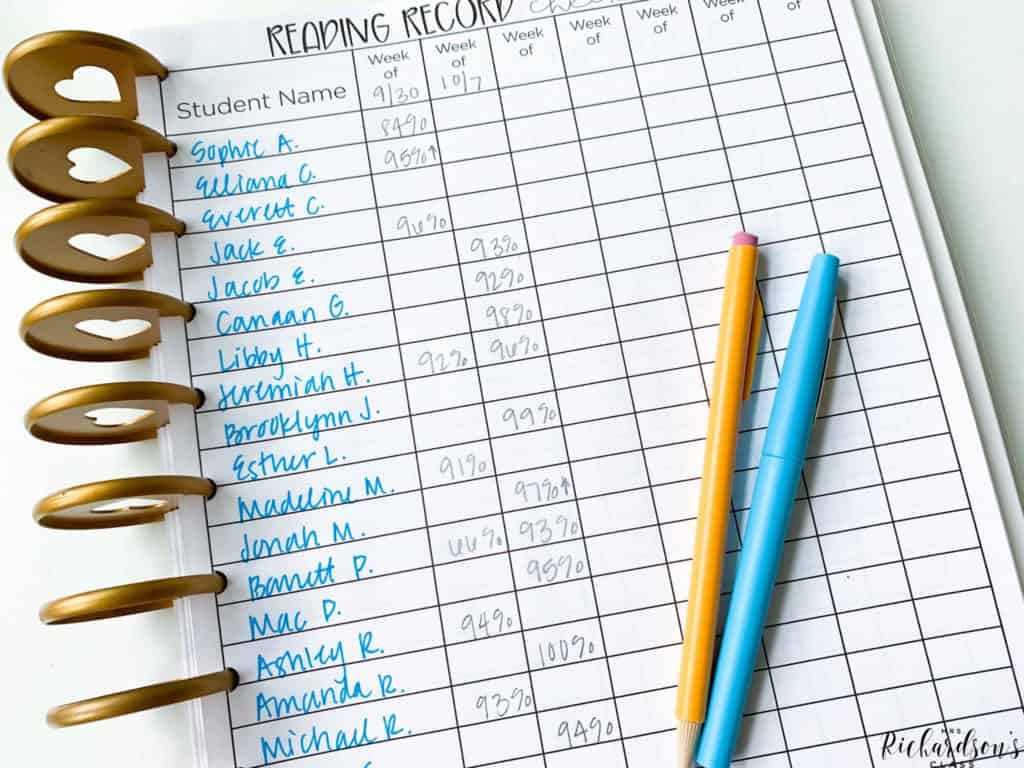
I can open my binder and quickly tell a parent, “At the beginning of September your child read a level A at 89% accuracy. By the middle of September, she was reading at 95% accuracy so she moved up to level B!” I have all of the data at my fingertips.
For many, guided reading is done in conjunction with reader’s workshop. I know so many who do both in their classrooms. I included four different pages of ways to track reading conferences and student progress. Keeping both types of notes altogether makes it so much easier to see each students’ strengths and weaknesses.
If you find yourself referring to a resource often, put it in your binder. Make a “Teacher Resources” section and stick it there. I like to have book level correlations, reading level progress charts, teacher prompts, and a running record cheat sheet handy. These are all included in the Guided Reading Binder for you! You can get a free running record cheat sheet in my post HERE.
Another tool I use every single day during my guided reading time is my Guided Reading Resource Cards. These cards have been changed and adjusted over the years. I know they will help you with your guided reading time as much as they have helped me throughout the years.
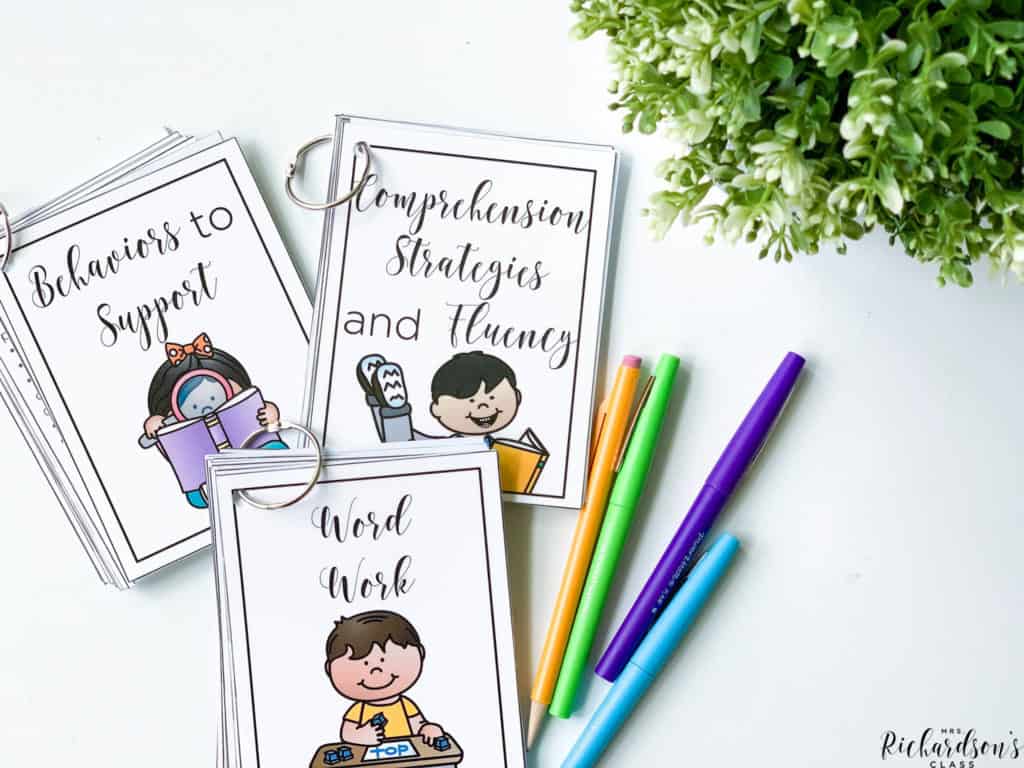
Each set of cards is broken down into levels A-Q. Each card has things that you can focus on with students who are on that reading level. Maybe a student is really excelling at their decoding but needs more comprehension work. These cards are the perfect tool to help you with that! And, they’re FREE.
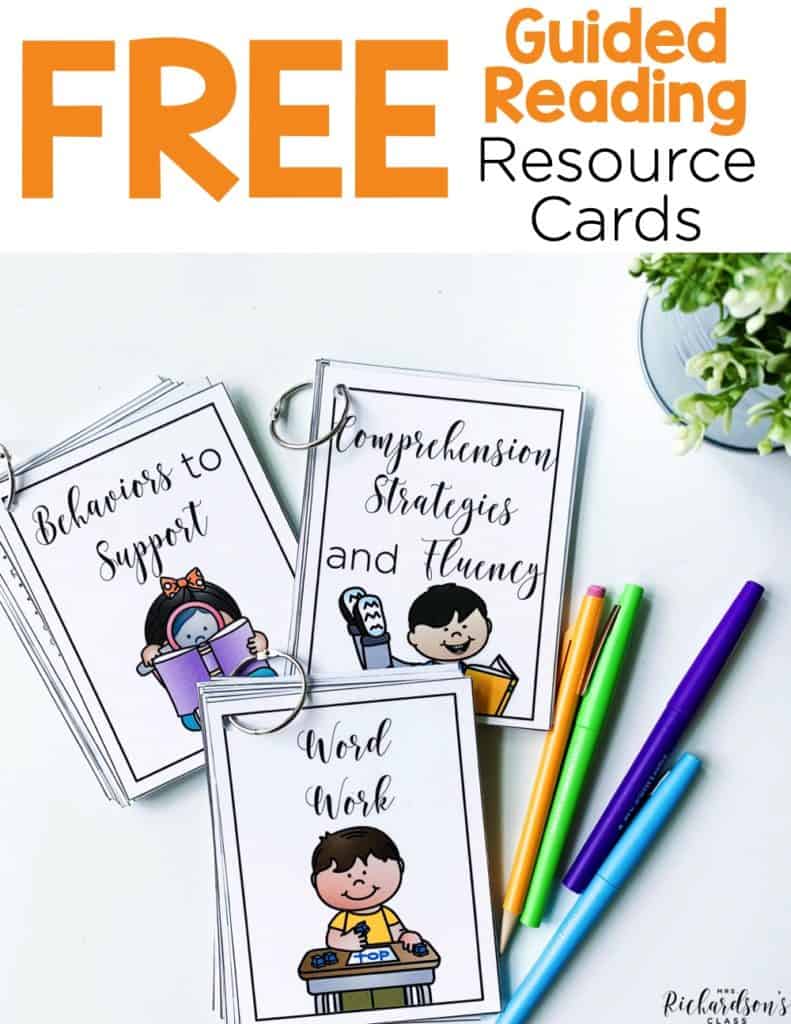
If you don’t have the time or energy to go out to buy dividers, design sections, make templates, and create data tracking spreadsheets, I don’t blame you. Teachers are busy! My Guided Reading Binder has everything you’ll need to stay organized during guided reading – already done for you.
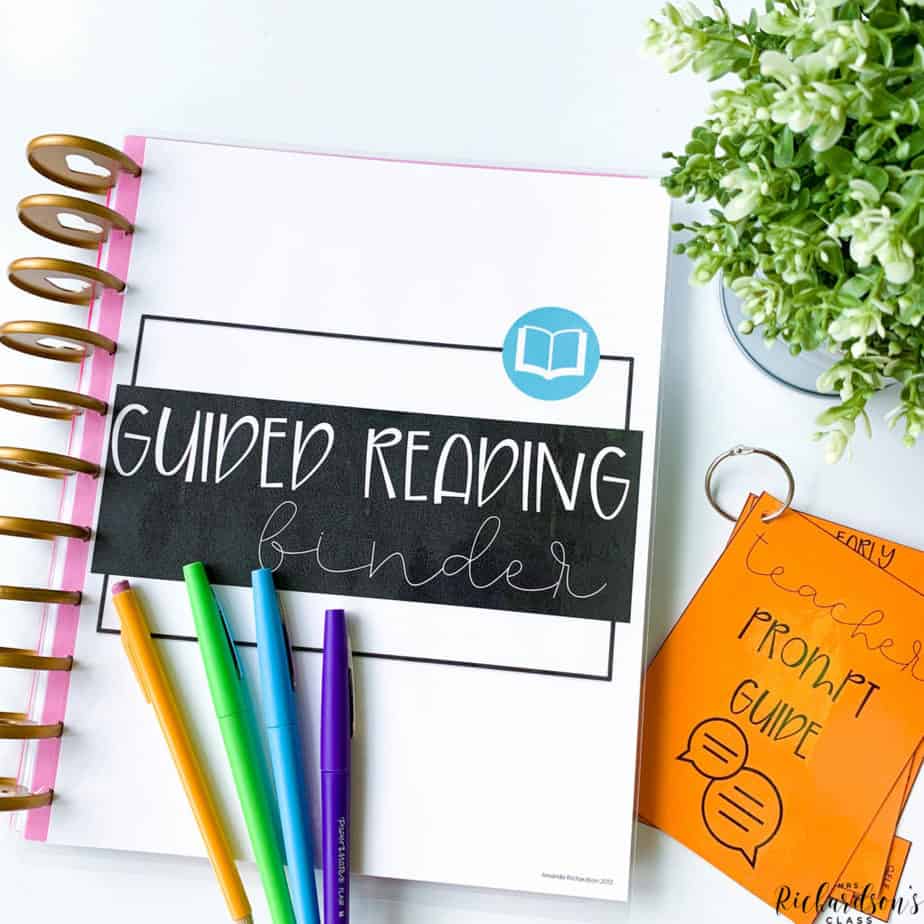
It includes:
Jill who is using this in her classroom said, “[This] made me excited about my guided reading documentation.”
Kendyl said, “Perfect resource to keep my guided reading organized and up to date! I use this to track student progress and ensure my time with small groups is efficient.”
We only have so much time during the day to give powerful, effective reading instruction to our students. Let’s make it as efficient as possible. Head over to my store and grab yours to get organized now.
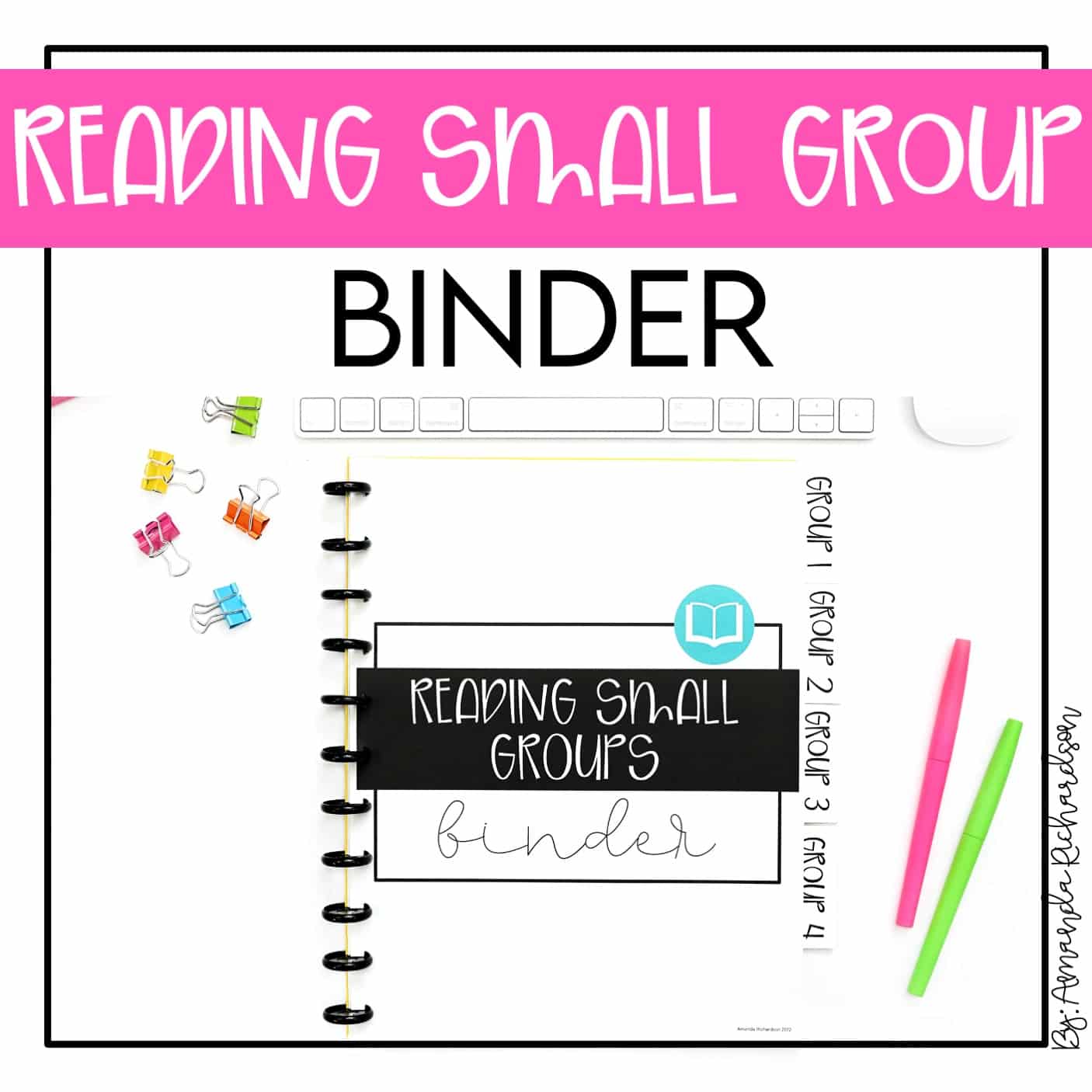
If you are ready to dive deeper into guided reading or need help getting started, you can join the wait list for Guided Reading Unpacked: An explicit guide to master instruction.